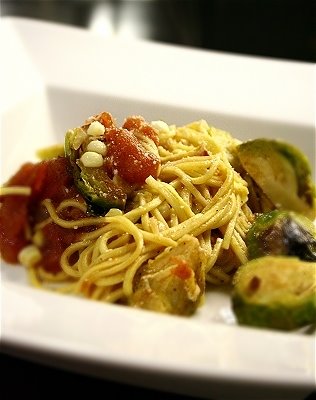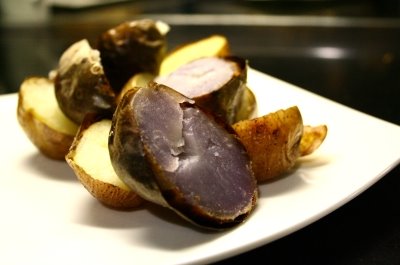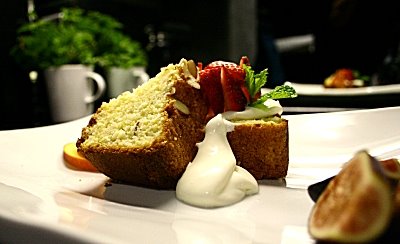Lav and I were having Vijay, Meg and Victor over for dinner last night, so we trolled ourselves over to Ver Brugge and Berkeley Bowl for all the essentials. I've been reading about Thomas Keller's butter poaching technique for lobster (Vijay noted that a similar preparation was used by Ron Siegel when he won "Battle Lobster" on the original Iron Chef in October 2000) and the merits of the
beurre monte.

The science behind the technique seems solid -- if you heat a protein to a high temperature, it will seize up and toughen; keep the temperature low, and the meat will remain tender. I decided to try and adapt the technique for beef tenderloin. If medium-rare is between 130 and 135 degrees F, then slow poaching in butter at that temperature should theoretically yield an incredibly tender steak. I added some aromatics (shallot, bay leaf, garlic) to my poaching liquid in the hopes of imparting a subtle flavor in the process.
-------------------------------------------
GRANITA
grapefruit, lime, mint, verget du sud marsanne
PRAWN CEVICHE
red onion, cucumber, heirloom tomato, avocado, cilantro
SALAD OF FRISEE, MANCHENGO AND FILBERT
japanese black cherry tomatoes, warm bacon dressing
SEARED SCALLOP
andouille, kabocha puree, coconut foam
GRASS-FED BEEF TENDERLOIN POACHED IN BUTTER, QUICK SEAR
potato puree, melted fennel, st. andre and bleu cheese béchamel, licorice reduction
ROSE WATER CRÈME CARAMEL
golden raspberries, baby kiwi
-------------------------------------------
The granita was intended to awaken the palate and appetite, and to provide some initial acidity as a complement to the roussanne we were drinking. There was also a spash of marsanne in the granita... I wanted to give Vijay a bit of insight into both of the wines he was picking up that night.
For the prawn ceviche, we went with a traditional combination of lime, cucumber, and red onions. I also added chunks of heirloom tomato for sweetness and cilantro to mellow the acidity of the lime and freshen the combination. Since the prawns were quite meaty, I also threw in some soft avocado and a drizzle of a smooth, buttery extra-virgin olive oil to add a nice roundness.
At this point, we opened up the 2002 Paul Hobbs chardonnay, Russian River Valley, that Vijay graciously provided. This was a lovely California-style chardonnay that exhibited balance even with the strength of its fruit core. More importantly, it led to an amazing pairing later on in the meal...
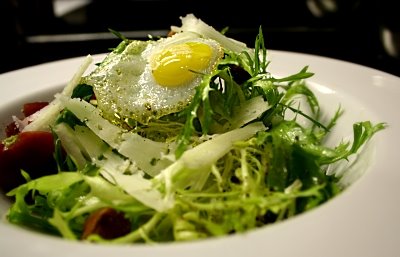
Originally, I wanted to serve a spinach salad with a warm bacon vinaigrette. Unfortunately, with the whole e. coli situation going on, baby spinach wasn't an option. So we picked up a bunch of frisee, which has the texture and bite to hold up to the bacon. We also found these incredible japanese black cherry tomatoes at the market, whose depth of flavor mirrored their deep ruby/violet color, while still maintaining some acidity. The manchengo shreds are there for depth of flavor, the hazelnuts connect to the hint of nuttiness in the manchengo, and the quail egg creates one final small layer of rich creaminess. A nice pairing with the chardonnay.

This scallop dish was my favorite of the night because I thought it had the best marriage of component flavors, with the added bonus of being a PERFECT match with the chardonnay. Pristine scallops have an inherent sweetness, with a nuance of the sea. This affords a great opportunity to capitalize on both sweet and savory components. In this dish, the seared scallop is scored on one side (for visual appeal and textural mouthfeel after caramelization) and paired with a kabocha squash puree, seasoned with a pinch of cinnamon, allspice, and cayenne. A dice of andouille is seared in the pan at the same time to add richness. The scallop is topped with spindle-like onion sprouts, which have the most delicate essence of onion aroma.
The most important component of the dish, however, was the coconut foam (not pictured). The rich depth of the sweet coconut aroma and flavor truly unified the sweet and savory elements of the dish, substantially elevating it. The savory unctiousness of the scallop and andouille, paired with the sweetness of the kabocha puree and the tropical notes of the coconut foam were truly an unexpectedly ideal marriage with the Hobbs chardonnay. For me, the combination was absolutely seductive and alluring.

Now for the experimental dish of the night. Grass-fed (leaner and meatier) filet mignon, poached in scented butter at 140 degrees for 20 minutes, then flash seared on one side for textural contrast. The licorice reduction was equally experimental; it was done to play off of the melted fennel served on top of the steak, but with an exponentially more intense flavor concentration. I was afraid that the flavor wouldn't match well, but there was remarkably little clash, and even those who don't like licorice (Lav) enjoyed the combination. Unexpectedly, the strength of the licorice actually opened up the silky texture of the filet.
The potato puree was made of creamer potatoes for natural sweetness and creaminess. The finish on the steaks was a bechamel made with st. andre and bleu cheese -- just some extra decadence, with the hint of sharpness from the bleu cheese as a classic contrast. Everthing about this dish reflects the meat's tenderness and silkiness. The butter poaching worked as intended, and the steak was just under medium-rare, with a velvety mouthfeel. We paired it with a 1997 Clos du Val cabernet, which was lightly earthy and elegant, but ended up being a little lighter-bodied than what was needed for the dish. Perhaps a young Pomerol from a hot summer vintage would have been the right match...

A well-made creme caramel is one of my favorite desserts. The rose component was inspired by Citizen Cake's use of rose water in its creme brulee. The aroma can be subtle, but it is such a good match with vanilla. Here it is served with a candied rose petal, golden raspberry and baby kiwis -- which we'd never seen before! The kiwis were fantastic... but the creme caramel was sweeter than I had intended.

Meg and Victor brought some delectably decadent truffles from XOX (http://www.xoxtruffles.com/) to finish off the meal. What a great way to cap off the night. The whole evening reminded me why I enjoy cooking. Sure, it's great when the dishes turn out as hoped, or when terrific food/wine pairings are discovered, but really, the most important part to me is creating a reason for friends and loved ones to get together and enjoy each other's company. There's really no better reason to do it. And Lav and I are truly blessed for each of the friends and family members who enrich our lives.





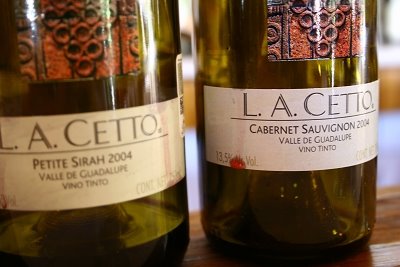






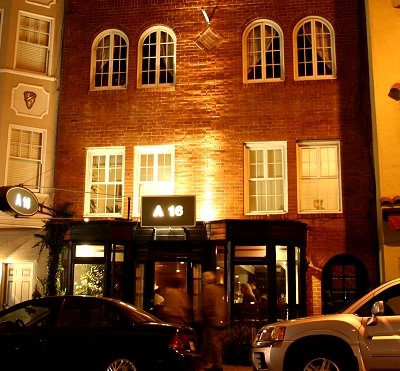












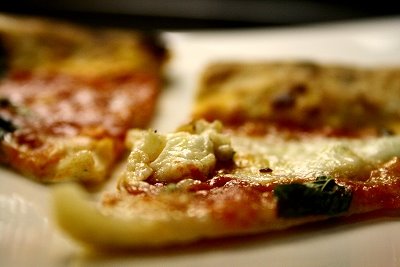 The Pizza: Margherita di bufala
The Pizza: Margherita di bufala
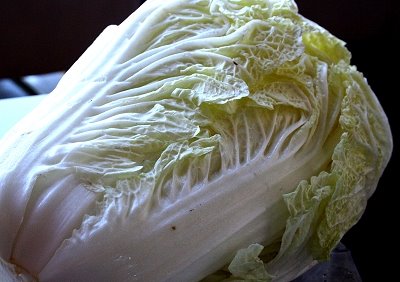
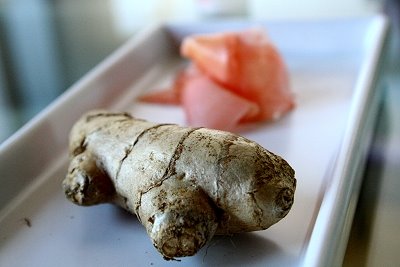

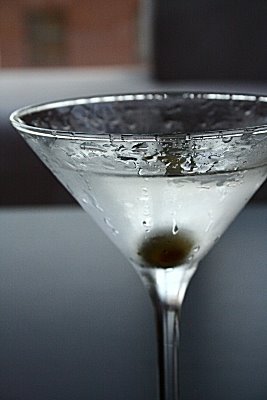 I went with Citadelle, which has 19 different botanicals. It really does have an incredibly complex flavor that is both floral and savory at the same time. The juniper, coriander, cardamom and star anise are the components that I find the most prominent. With so many dimensions, the martini evolved quite a bit as it went from ice cold and viscous to moderately chilled, with the bouquet really exploding as the drink's temperature increased a few degrees.
I went with Citadelle, which has 19 different botanicals. It really does have an incredibly complex flavor that is both floral and savory at the same time. The juniper, coriander, cardamom and star anise are the components that I find the most prominent. With so many dimensions, the martini evolved quite a bit as it went from ice cold and viscous to moderately chilled, with the bouquet really exploding as the drink's temperature increased a few degrees.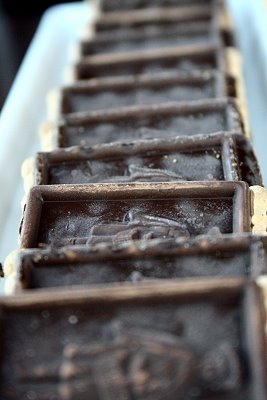 Le Petit Ecolier: One of those ingenious combinations... pure butter cookies topped with bars of dark chocolate. Stone-cold proof that not all pre-packaged foods are bad.
Le Petit Ecolier: One of those ingenious combinations... pure butter cookies topped with bars of dark chocolate. Stone-cold proof that not all pre-packaged foods are bad. 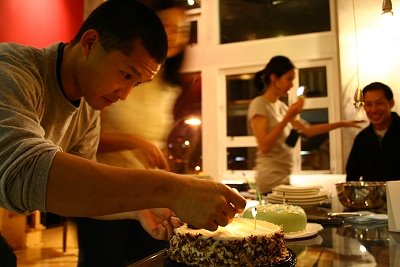 Here's Jacob, lighting the birthday cake(s) for Jen (the blurry one) with a look of steely determination. Princess cake from La Farine. Yum. Happy birthday Jen!
Here's Jacob, lighting the birthday cake(s) for Jen (the blurry one) with a look of steely determination. Princess cake from La Farine. Yum. Happy birthday Jen!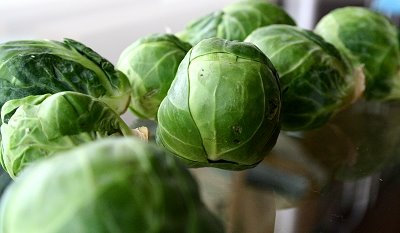 The brussel sprout is such an undeservedly maligned vegetable, often scorned and derided as “bitter”, “slimy”, “weird”, “icky”, and “stinky”. I never had brussel sprouts growing up; the first time I ever had them, they were roasted until slightly blistered with a bit of browned butter, which coaxed out the inherent sweetness, combined with a fragrant smoky nuttiness… awesome. We nabbed these little gems from the Yasai market.
The brussel sprout is such an undeservedly maligned vegetable, often scorned and derided as “bitter”, “slimy”, “weird”, “icky”, and “stinky”. I never had brussel sprouts growing up; the first time I ever had them, they were roasted until slightly blistered with a bit of browned butter, which coaxed out the inherent sweetness, combined with a fragrant smoky nuttiness… awesome. We nabbed these little gems from the Yasai market. The wine itself was quite ripe (15.2% alcohol… whew!) with a nose of sweet roses and intensely concentrated cherries and dark plums. Pretty huge, but remarkably soft on the palate. There was a sweetish, nuanced undertone that I had a hard time identifying… maybe a spice like nutmeg, but not quite.
The wine itself was quite ripe (15.2% alcohol… whew!) with a nose of sweet roses and intensely concentrated cherries and dark plums. Pretty huge, but remarkably soft on the palate. There was a sweetish, nuanced undertone that I had a hard time identifying… maybe a spice like nutmeg, but not quite.